If you’re currently looking for a new smartphone or maybe you’re planning to upgrade, but still want to keep the budget below PHP 20,000USD 341INR 28,892EUR 325CNY 2,482, then you might want to check out this Redmi Note 11 Pro Plus 5G. It’s the first smartphone in the Redmi Note series with a “plus” in its name, and it’s actually impressive for an upper-midrange device, especially with its 120w fast charging capabilities. Keep on reading to know more.
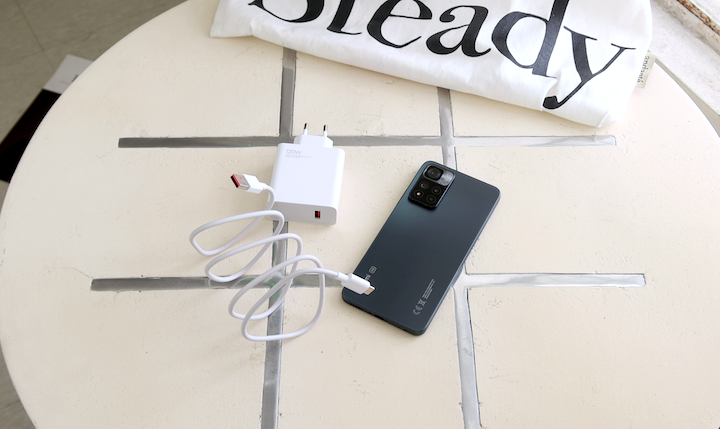
Table of Contents
This Pro+ version basically shares a similar design to the Redmi Note 11 Pro 5G non plus, so we get the same flat glass back and front, together with a nice metal frame. The only difference between the two is in the camera module since this Pro+ has a larger and more protruding one. Placing a case on will reduce the camera bump, but it is still noticeable.
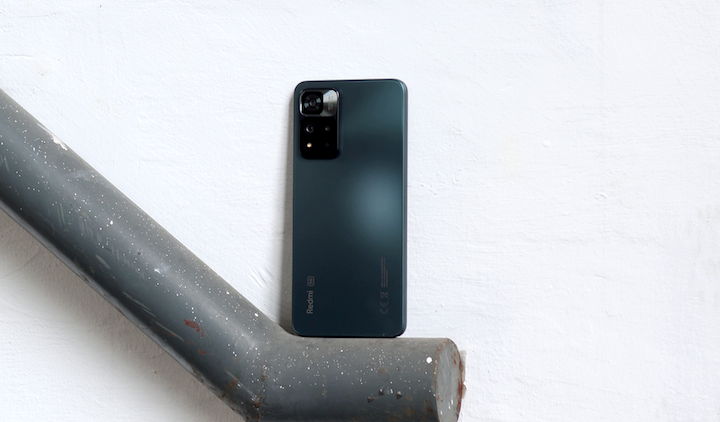
The phone feels hefty and thick, which isn’t really easy to use one-handed nor slip into pockets. But like the Pro model, it feels and looks robust, plus, it’s IP53 dust and splash resistant so it should be fine for people with slippery hands. Take note that this doesn’t mean that it’s waterproof, but it should survive accidental splashes or rain.
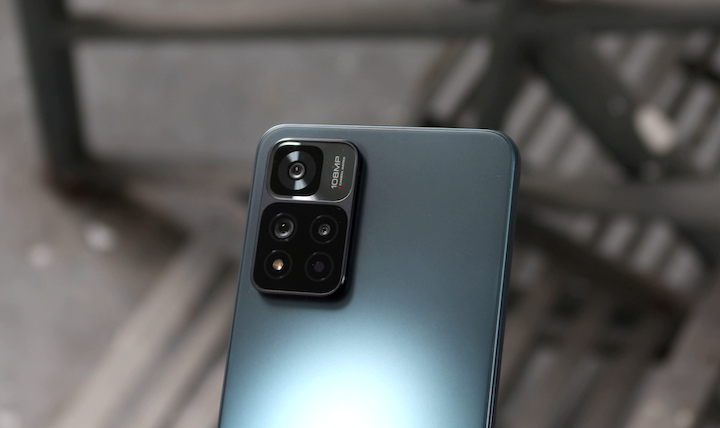
Our unit sports the Forest Green color, which gives off an elegant look thanks to its frosted glass back and shows off some light effects depending on the angle. It still attracts smudges, though, but not as much as a glossy back. For other color options available, there’s Graphite Gray and a shimmering Star Blue.
Found on the right side are all the buttons; the volume rocker and the power key, which doubles as a fingerprint scanner.

Meanwhile, the top part is packed with the headphone jack, IR blaster, secondary microphone, and a speaker grille that also doubles as an earpiece.
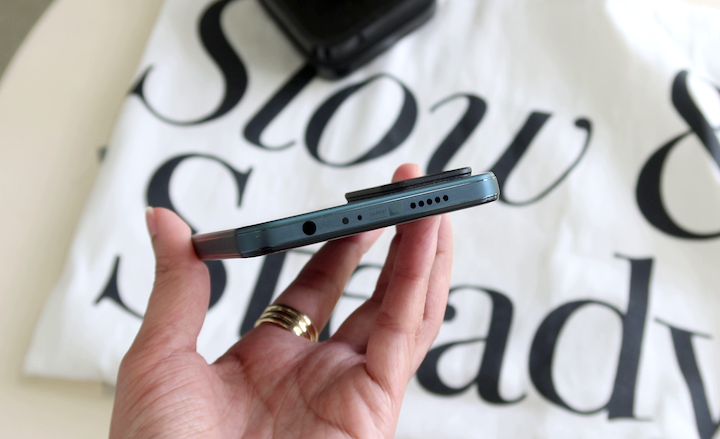
Then at the bottom, we get another speaker, the main microphone, the USB Type-C port, and a hybrid card slot for a nano-SIM or a microSD card for up to 1TB cards.
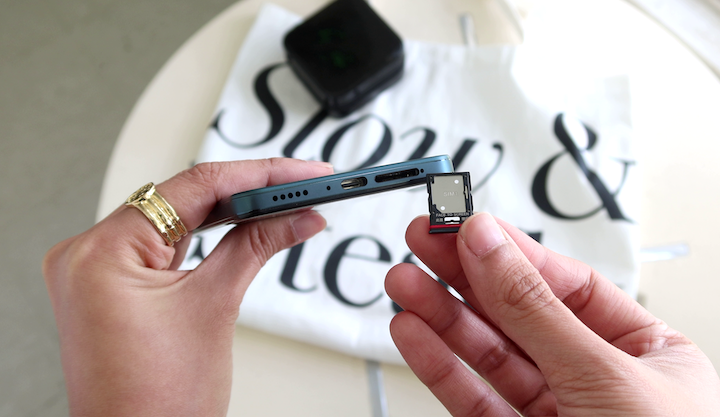
Checking out the display, similar to the Redmi Note 11 Pro and even last year’s Redmi Note 10 Pro, we get a 6.67-inch 120Hz FHD+ AMOLED display with a pixel density of 395ppi and a peak brightness of 1,200nits. The bezels look relatively slim with the call speaker on the top part. As you can see, we get a punch hole notch on the upper middle, which you can still hide with a black bar in the settings. We also appreciate that on top of the Gorilla Glass 5 protection, there’s already a screen protector on top as well.

Quality-wise, with an AMOLED panel, you can automatically expect sharp details with bright and vivid colors that blend well with inky blacks, so maximizing the system-wide dark mode is great.
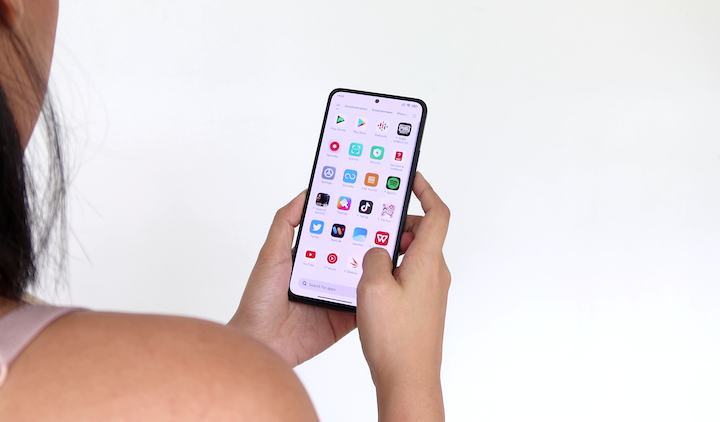
In the display settings, you can change the color scheme to Standard, Saturated, or Vivid, and you can also tweak your preferred color temperature.
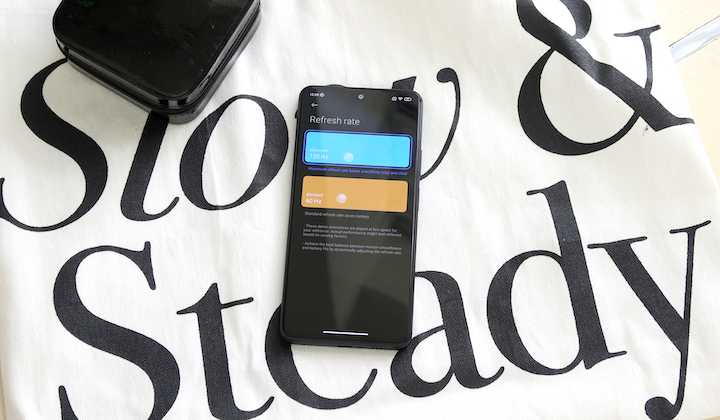
Then, of course, there’s the option to switch the refresh rate between the smooth 120Hz and the standard 60Hz if you want to save more battery life. Xiaomi’s reading mode is also on board and it helps reduce eye fatigue if you’re always on your screen.
As for audio quality, this phone stands out within the Redmi Note 11 series with dual stereo speakers that are tuned by JBL. It provides an almost high-end quality with a rich balance mix of highs and mids. There’s a hint of bass but don’t expect the same quality found in dedicated speakers. If you want to further boost the sound quality, then you can turn on its Dolby Atmos settings or, you know, use your favorite wired headsets.
At the back, its triple camera setup is composed of a 108MP main, an 8MP ultrawide, and a 2MP macro. Then on its notch is a 16MP selfie camera.
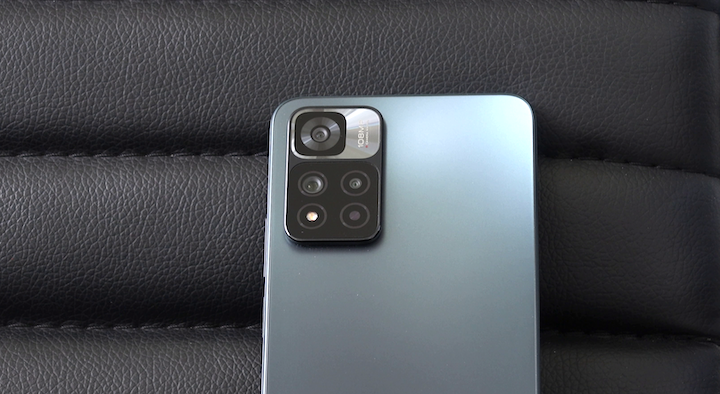
When it comes to quality, we’re impressed with almost all the images produced. It brings out a lot of details, vibrant colors, and a decent dynamic range in bright conditions. If you’re into sharp or contrasty photos, then you’ll appreciate its cameras more. However, we suggest trying to focus shots correctly to avoid overexposed outputs.
Ultrawide photos also turn out good as well, but looking closely at the edges and corners, there is some softness or a slight fisheye effect. Then when it comes to macro shots, it’s pretty impressive. Details are clear, crisp, and the colors are vibrant.
For low-light shots, it does a respectable job too. It often looks shadowy and muddy without any AI or night enhancement turned on. But when we used its night mode, we get more subtle details with better lighting effects.
Checking out some selfies, it looks a bit pale most of the time, falling more on cooler tones. But with very good lighting or sunlight, you can get a natural-looking photo with sharp details.
The portrait mode provides good enough subject-background separation, plus you can adjust the aperture and blur style depending on what you prefer in post.
As for videos, the Pro+ is capable of shooting up to 4k at 30fps. And just like with the photos, the quality is sharp with a good dynamic range and colors.
Running the software is Android 11 skinned with MIUI 12.5. It’s a familiar user interface that features custom icons and wallpapers. Apps are arranged on the home screen, but there’s also an option for an app drawer if that’s what you prefer. There are still a few ads across the interface, but you can remove most of them by turning off the promoted apps toggle.
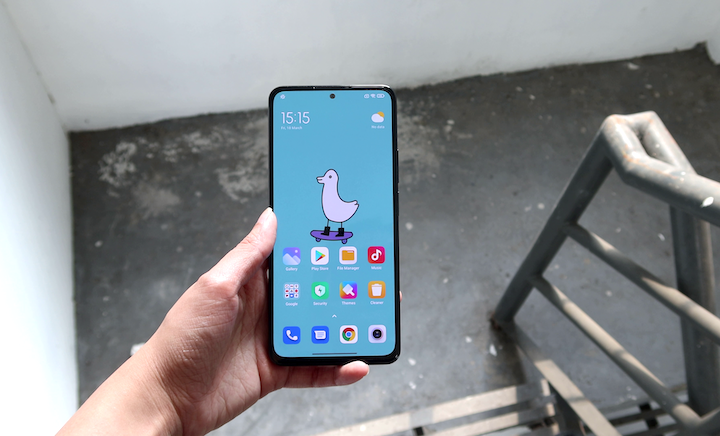
Apps are arranged on the home screen, but there’s also an option for an app drawer if that’s what you prefer.
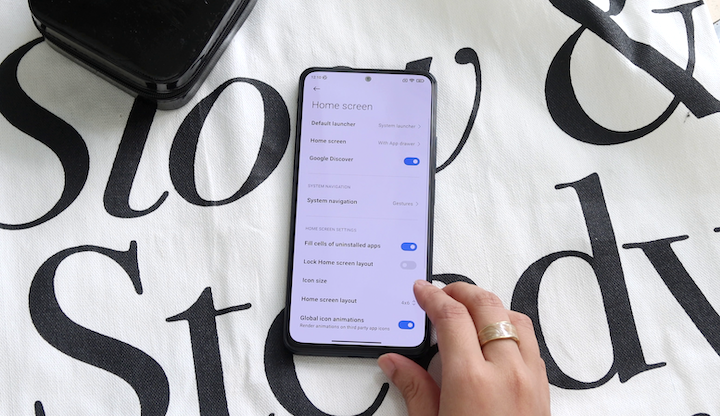
Then, of course, there’s also the option to change the Control Center style if you want the simple and familiar drop-down style or the newer iOS familiar look that separates the notifications from the main control center. Personally, we prefer the modern-looking version.

However, unlike the updated MIUI 13, we get a number of bloatware and pre-installed apps, including some game apps, Google, Netflix, Amazon Shopping, LinkedIn, TikTok, Spotify, and Facebook that you can always uninstall if you don’t plan on using.
As for storage, the unit we have packs 128GB and out of the box, we get a usable space of 106GB. Thankfully, you can expand this via a microSD card for up to 1TB.
Under the hood, the Xiaomi Redmi Note 11 Pro+ 5G is loaded with a MediaTek Dimensity 920 5G together with a Mali-G68 GPU and 6/8GB of RAM. The unit we have packs 8GB and it is smooth for basic day-to-day phone activities.

For its range, this is a high-performing smartphone that can even handle heavy games well under low to medium graphic settings. We didn’t encounter a lot of hiccups and thankfully the body doesn’t heat up too much since it does have a LiquidCool Technology 2.0.

If you want to boost the performance further, then you can turn on the performance mode in the battery and performance settings—but of course, expect it to consume more battery.

Check out the benchmark scores that we got:
When it comes to biometrics and security, you can unlock the screen via the side-mounted fingerprint scanner and through facial recognition. Both worked snappily and accurately. Honestly, we think that placing the fingerprint scanner on the side is a more convenient way to unlock your phone as it is quick and easy to access.
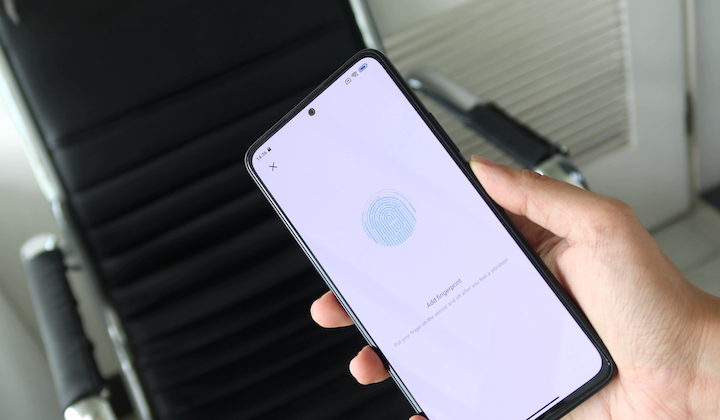
As for connectivity, just like its 5G sibling, the Redmi Note 11 Pro+ is complete with Dual-SIM, 5G, 4G LTE, Wi-Fi, Bluetooth 5.2, GPS, NFC, screencast, and an IR blaster.
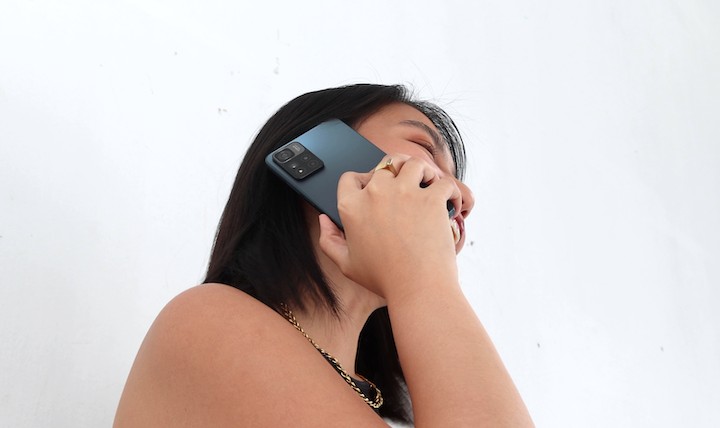
For the battery, having a 4,500mAh capacity might honestly be small for today’s standards, but the 120W hypercharge sounds like a really good deal.

It’s great because I no longer have the urge to overcharge since I can easily juice up the device to a full 100% in less than 20 minutes. Just make sure you don’t lose your 120W charger though.

When we ran it in our standard video loop test, which entails playing a 1080p video on loop at 50% brightness, 0% volume,120Hz refresh rate, and airplane mode turned on, the Note 11 Pro+ 5G yielded 23 hours and 46 minutes of playback. Meanwhile, in the PCMark’s Battery test, the device got a complete 12 hours and 2 minutes.
The Xiaomi Redmi Note 11 Pro+ is a very good 5G ready device. We’ve reviewed a few other phones with “pluses” on their names, yet so far Xiaomi got the assignment right—especially if they price this convincingly well. Most of its features can also be found on its lower variant, the Note 11 Pro 5G, but if you want that super-fast charging, JBL-backed speakers, improved performance, and subjectively slightly better cameras, for something that starts under PHP 20K, then this one might be the phone for you.
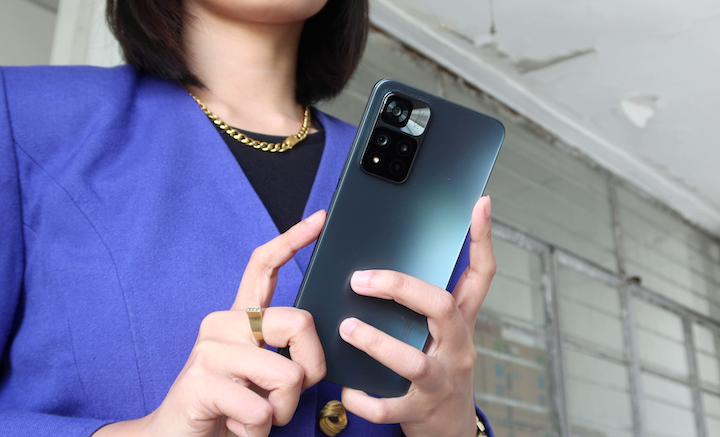
The Redmi Note 11 Pro+ 5G comes in three variants: 6GB + 128GB, 8GB + 128GB and 8GB + 256GB. The Redmi Note 11 Pro+ 5G 8GB + 128GB and 8GB + 256GB will be available in the Philippines for PHP 19,999USD 341INR 28,891EUR 325CNY 2,482 and PHP 21,999USD 375INR 31,780EUR 357CNY 2,730, respectively.
The early bird promo for the Redmi Note 11+ Pro 5G is from April 6 to 8, exclusively on Shopee and Lazada. During the period, you can get the Redmi Note 11 Pro+ 5G 8GB + 128GB for PHP 18,999USD 324INR 27,446EUR 308CNY 2,358 during the flash sales, while the 8GB + 256GB variant will come with a free Mi Watch Lite worth PHP 2,499USD 43INR 3,610EUR 41CNY 310. Limited stocks apply.
And that wraps up this review. What do you think about this Redmi Note 11 Pro+ 5G? Let us know in the comments.
Xiaomi Redmi Note 11 Pro+ specs:
6.67-inch HDR10 AMOLED (1080 x 2400) DotDisplay
Corning Gorilla Glass 5
120Hz refresh rate
MediaTek Dimensity 920 5G processor
Mali-G68 MC4
6GB, 8GB RAM
128GB, 256GB storage UFS 2.2
Triple rear cameras:
• 108MP (main)
• 8MP (ultrawide)
• 2MP (macro)
16MP selfie camera
5G
Dual-SIM (nano)
Bluetooth 5.2
WiFi 802.11 a/b/g/n/ac/ax
A-GPS, GLONASS, GALILEO, BDS
NFC
IR Blaster
Sound by JBL
USB Type-C 2.0
Fingerprint scanner (side-mounted)
IP53 Splash-proof
4,500mAh battery w/ 120W fast charging
MIUI 12.5 (Android 11)
163.65mm x 76.19mm x 8.34mm
204 g
Graphite Gray, Star Blue, Forest Green

YugaTech.com is the largest and longest-running technology site in the Philippines. Originally established in October 2002, the site was transformed into a full-fledged technology platform in 2005.
How to transfer, withdraw money from PayPal to GCash
Prices of Starlink satellite in the Philippines
Install Google GBox to Huawei smartphones
Pag-IBIG MP2 online application
How to check PhilHealth contributions online
How to find your SIM card serial number
Globe, PLDT, Converge, Sky: Unli fiber internet plans compared
10 biggest games in the Google Play Store
LTO periodic medical exam for 10-year licenses
Netflix codes to unlock hidden TV shows, movies
Apple, Asus, Cherry Mobile, Huawei, LG, Nokia, Oppo, Samsung, Sony, Vivo, Xiaomi, Lenovo, Infinix Mobile, Pocophone, Honor, iPhone, OnePlus, Tecno, Realme, HTC, Gionee, Kata, IQ00, Redmi, Razer, CloudFone, Motorola, Panasonic, TCL, Wiko
Best Android smartphones between PHP 20,000 - 25,000
Smartphones under PHP 10,000 in the Philippines
Smartphones under PHP 12K Philippines
Best smartphones for kids under PHP 7,000
Smartphones under PHP 15,000 in the Philippines
Best Android smartphones between PHP 15,000 - 20,000
Smartphones under PHP 20,000 in the Philippines
Most affordable 5G phones in the Philippines under PHP 20K
5G smartphones in the Philippines under PHP 16K
Smartphone pricelist Philippines 2024
Smartphone pricelist Philippines 2023
Smartphone pricelist Philippines 2022
Smartphone pricelist Philippines 2021
Smartphone pricelist Philippines 2020